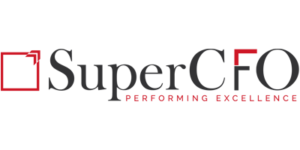A Product pricing decision can either make or break your business, as the consumer demand is considerably affected by the price of the product. Businesses strive to achieve an equilibrium price where demand meets supply. However, this optimum price can only be achieved once the business managers have covered all the aspects of the costing throughout the manufacturing cycle. SuperCFO provides an easy guide for business owners to help them undertake detailed product costing.
Costing in manufacturing operations
In cost accounting, major emphasis is given on capturing all the costs in the production process and proportionately assigning them to each unit produced. There are many ways of computing the cost of unit produced with the simplest of all being dividing the overall cost of all the inputs or the Bill of Materials by the number of units produced. While this is fairly easy and widely preferred by SMEs, the biggest limitation of this method is that it fails to capture other indirect overheads like the capital cost of equipment, training costs etc.
To overcome this, manufacturing businesses can look to undertake Activity Based Costing (ABC), wherein each of the firm’s activities are tracked and are used in determining the near-true cost of each product. ABC is based on the principle that every output requires firms to undertake certain activities and to perform each activity a firm requires resources. For example, undertaking detailed product costing is a cost to the business in itself and by using ABC firms can identify and capture this cost during the process.
Costing in Service operations
Although cost accounting or product costing was originally developed for the manufacturing industry, but with increased demand for professional services and the advent of service as a product, firms are interested to know the overall costs incurred in delivering a service to the customers. By undertaking cost accounting, a management consultancy firm is able to charge tailored rates for each of the services offered to clients. Though a consultancy is a single product firm, each product is a customized package depending upon the problem tackled or client’s requirement. For a management consultancy, staff costs constitute over 70% of the overall costs while the other overheads like rent and systems account for the remaining. To capture staff costs, firms must prepare a comprehensive timesheet that allows staff members to input details of the tasks performed for each of the clients and hours spent on completing the task. These activities can later be filtered in chargeable and non-chargeable tasks to ascertain the final cost to the vendor.
SuperCFO highlights five key areas that companies for improvement for achieving detailed product costing.
- Consistency: Companies should be consistent in capturing the costs. For example, a company’s production division may order excess inventory and may fail to capture the cost of holding that inventory.
- Information Technology (IT) Systems: To capture all the costs, companies are required to have robust accounting systems. Due to limited IT resources, companies find it difficult to track and apply overhead costs to its products.
- Weak Forecasting: In most instances, management teams miss sales forecast by margins, which result in over or under production of units. In either case, production costs are far from actuals.
- Communication: To arrive at real production costs, different departments in an organization need to work in close sync, especially the finance and the production department. For example, a production manager needs to communicate at what capacity is the production line operating in each quarter. This will help the finance team to allocate actual costs instead of inflated costs.
- Changing prices: To remain competitive, it is important for companies to account for the latest price of raw materials and other inputs. For e.g. the finance department must account for dynamic pricing like changing price of commodities as this may impact the cost of raw materials significantly




